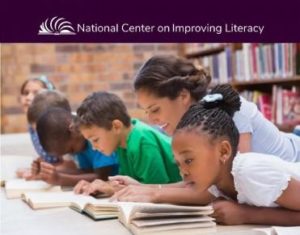INformation Hub
Understanding the Diverse Communities
Understanding the Diverse Communities
New from the Feds
 Advancing Equity and Support for Underserved Communities
Advancing Equity and Support for Underserved Communities
In keeping with President Biden’s Executive Order, signed on his first day in office, federal agencies have now issued Equity Action Plans for addressing equity issues in their individual agency scope and mission. These plans are quite relevant to family-led and family-serving organizations, especially plans from the Departments of Education, Justice, and Health and Human Services.
Fast Facts: Students with disabilities who are English learners (ELs) served under IDEA Part B
OSEP’s Fast Facts series summarizes key facts related to specific aspects of the data collection authorized by IDEA. This newest Fast Facts gives you data details about students with disabilities who are also English learners. (Want to see what other Fast Facts are available?)
Understanding More about Our Diverse Communities
Asian Americans with Disabilities Resource Guide
The Asian Americans With Disabilities Resource Guide was designed for Asian American youth with disabilities, allies, and the disability community in mind, in response to the significant information gap about Asian Americans with disabilities. Chapters include Advocacy 101, Accessibility, Culture, Allyship, and Resources.
Strategies for Partnering on Culturally Safe Research with Native American Communities
To identify strategies for promoting cultural safety, accountability, and sustainability in research with Native American communities, Child Trends assessed peer-reviewed and grey literature (e.g., policy documents and guidelines). Findings? To rebuild trust and improve health outcomes, research collaborations with Native American communities must be community-based or community-engaged, culturally appropriate, and recognize tribal sovereignty in the collection and use of data.
On Screening and Evaluating for a Learning Disability
 Understanding Screening
Understanding Screening
This toolkit helps educators and parents learn about screening and how screening can help determine which students may be at risk for reading difficulties, including dyslexia. From the National Center on Improving Literacy.
Inside an Evaluation for Learning Disorders
(Also available in Spanish: Un vistazo a una evaluación para los trastornos del aprendizaje)
If a child is struggling in school, the first step to getting help is an evaluation. A learning evaluation can give parents and the child’s teachers valuable information about the child’s strengths and weaknesses. It can also reveal what kind of support would be helpful. A full evaluation is necessary for a child to be diagnosed with a learning disorder. To help parents understand the process, the Child Mind Institute and Understood.org teamed up to create this 20-minute video that walks us through the evaluation process.
SOURCE ARTICLE: Center for Parent Information & Resources
Give us a call at (727) 523-1130 or (800) 825-5736 or request a callback by clicking below.
